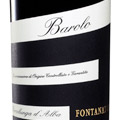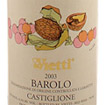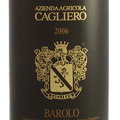Barolo grape: Nebbiolo
Barolo grape: Nebbiolo
The Barolo DOCG qualification requires that 100% Nebbiolo grapes are used. Nebbiolo is a blue grape primarily used to make red wine. Nebbiolo is also called Picutener, Chiavennasca and Spanna in other parts of Italy.Name:
It is uncertain where the name comes from, but one theory is that the name comes from the word Nebbia (Italian for "fog") because of the fog-like haze that appears on almost ripe grapes. Another theory is that it comes from the word Nobile that means noble in Italian.
Cultivation:
Nebbiolo is a complex grape to grow which is very picky about the soil where it is located. The grape prefers limestone soil with a special ratio of clay and sand that exists in certain parts of Piedmont. The grape needs a very long period to mature and enough sun during this period to ripen. Special care is taken with positioning of vineyards in Piedmont to optimally catch the sun. So far no winery managed to make good wine from the Nebbiolo grape outside of Italy, not even in new world wine countries such as Chile and South Africa where conditions are so good that everything grows.
Harvest:
The harvest of Nebbiolo grapes takes place in October, later than most other grapes.
Patience:
The Nebbiolo grape gives a very high tannin content for most wines that are made (Barolo and Barbaresco) from it and because of this most wines need a long aging time before you can drink them. While wine made from Nebbiolo grapes is described as being ready to drink in about 5 years it is best to let them age for approximately 10 years before drinking, given that the bottles are stored in a temperature controlled environment.





Specifications:
Color: RedRegion: Piedmont
Grape(s): Nebbiolo
Map:
Good wineries:
Fontana FreddaVietti
Gaja
Cagliero
Marchesi di Barolo
Josetta Saffirio